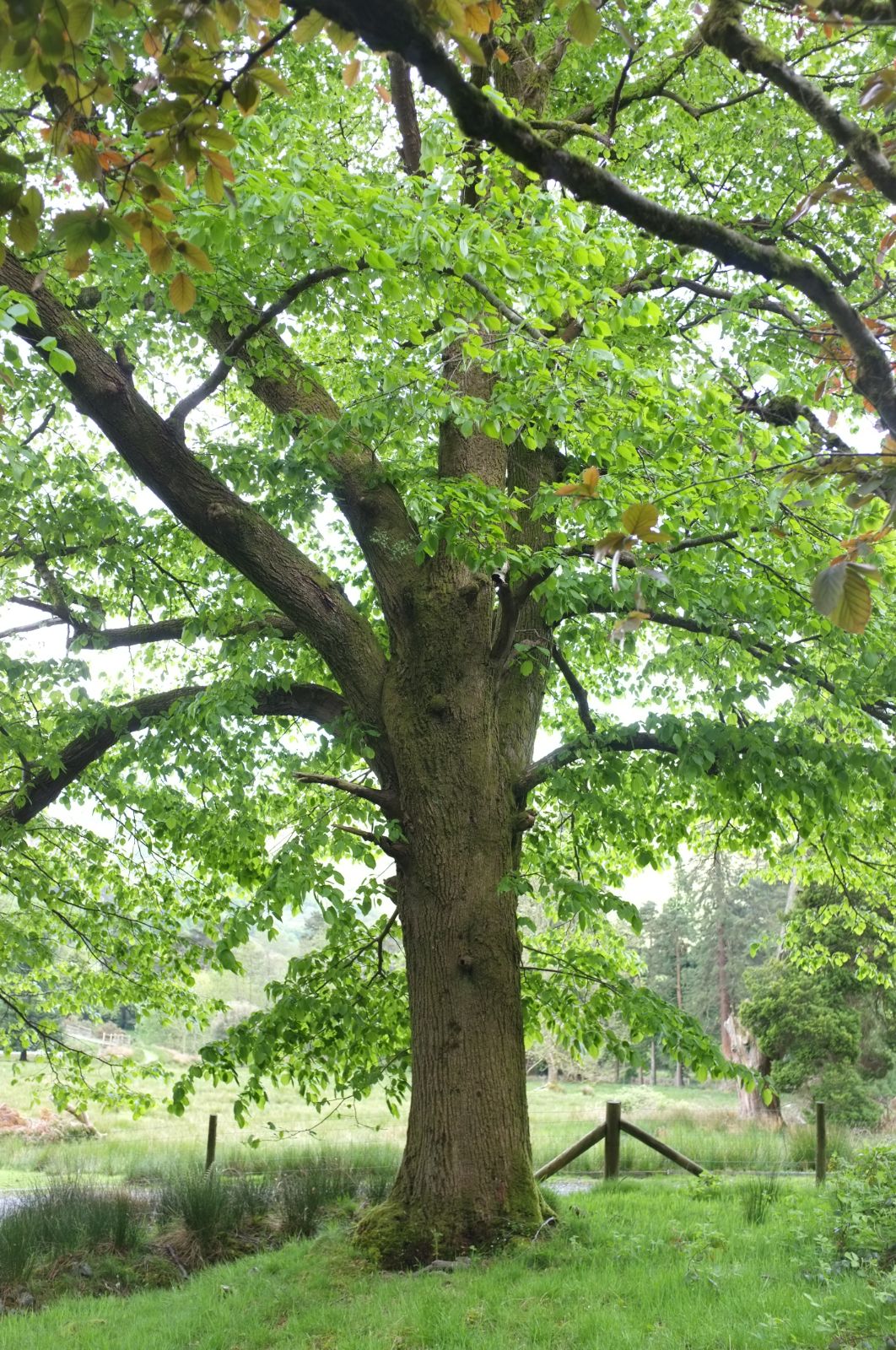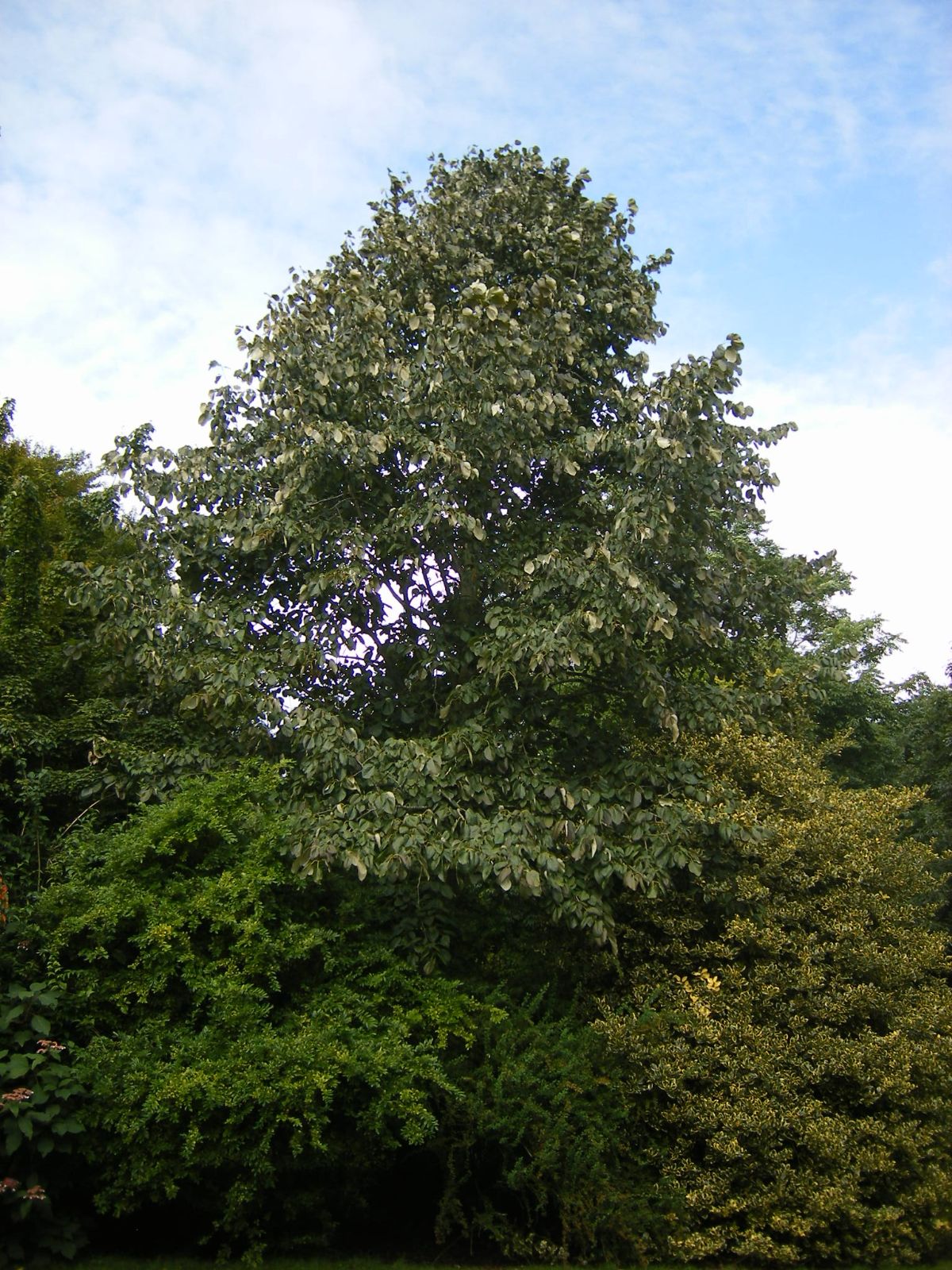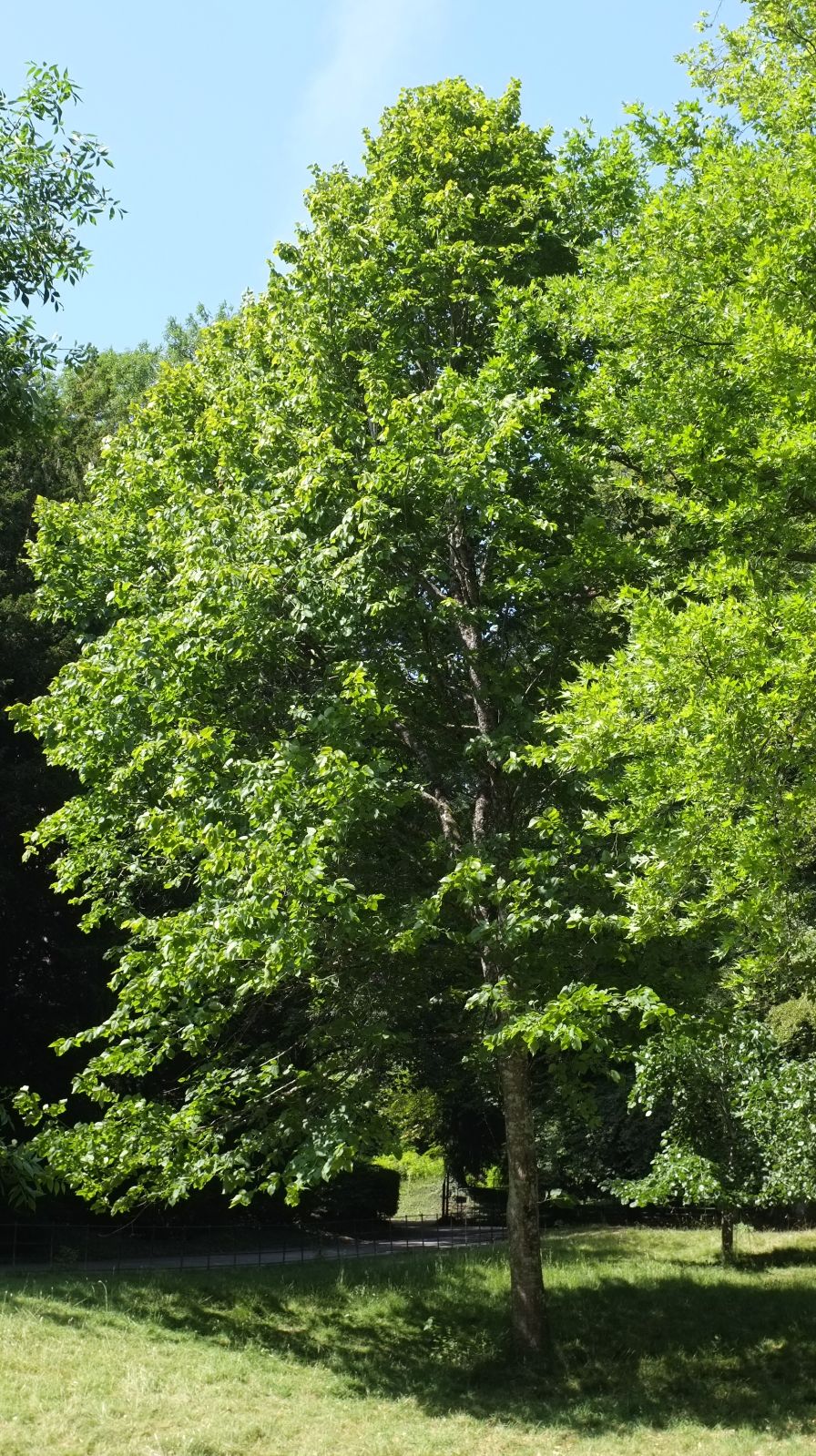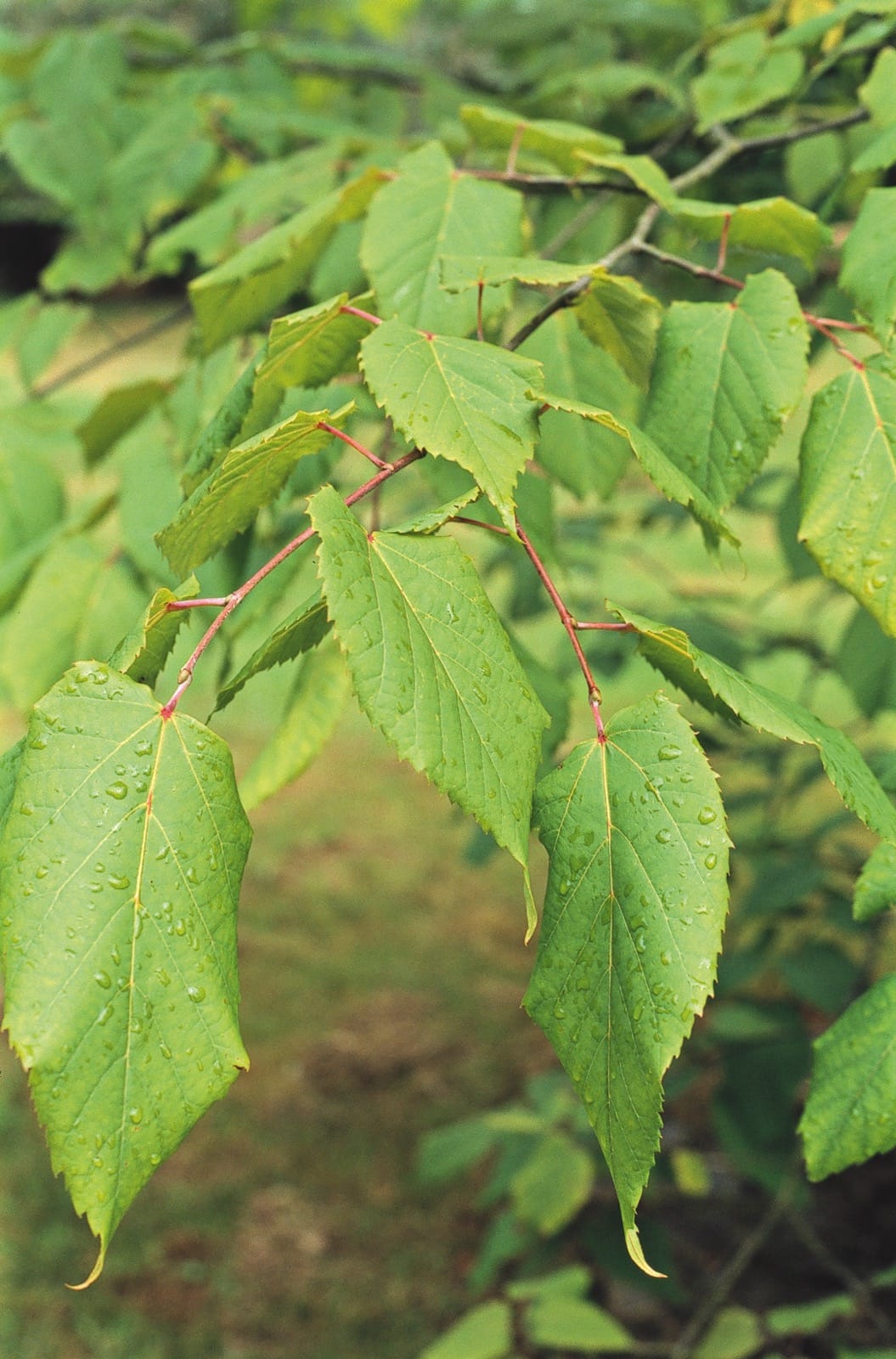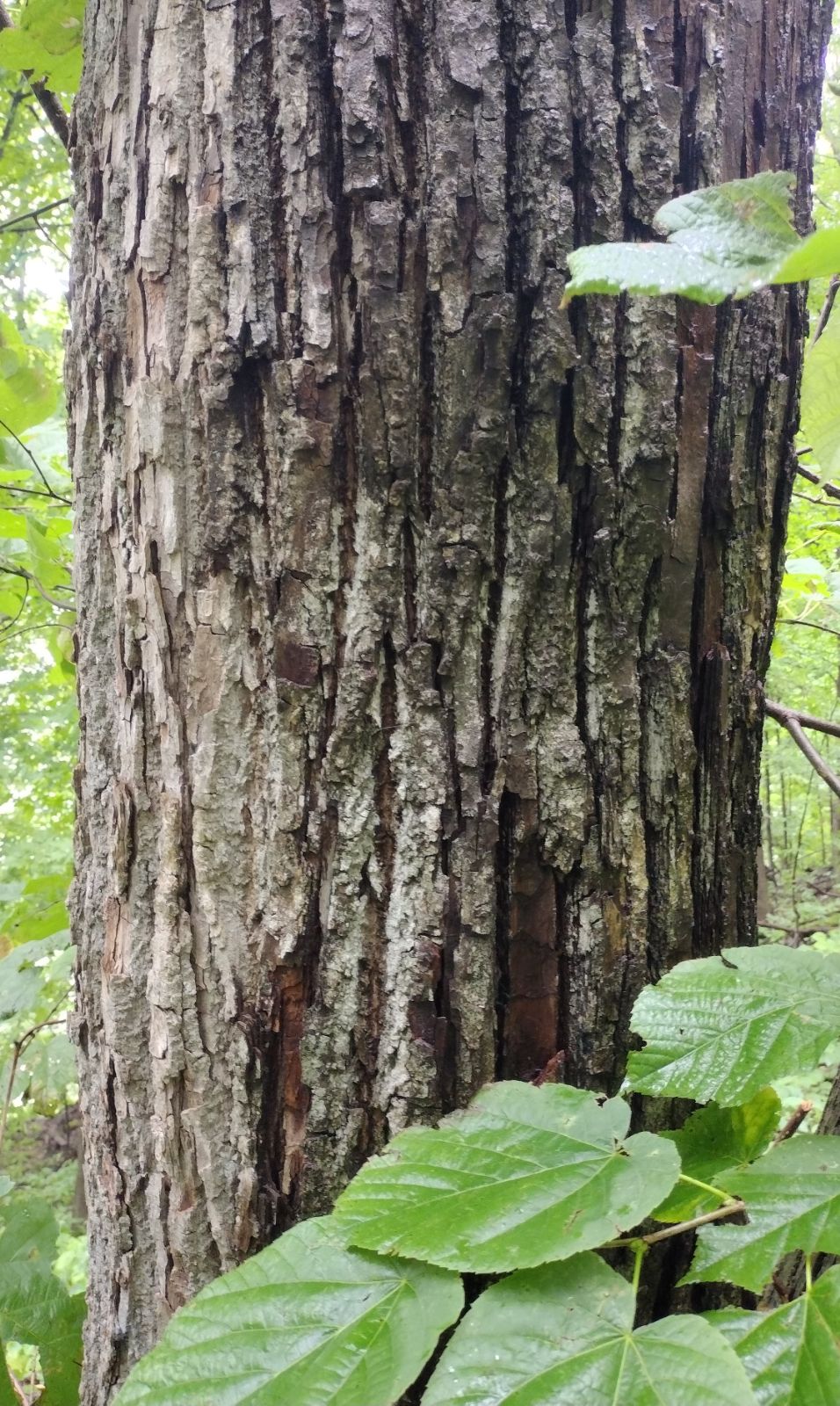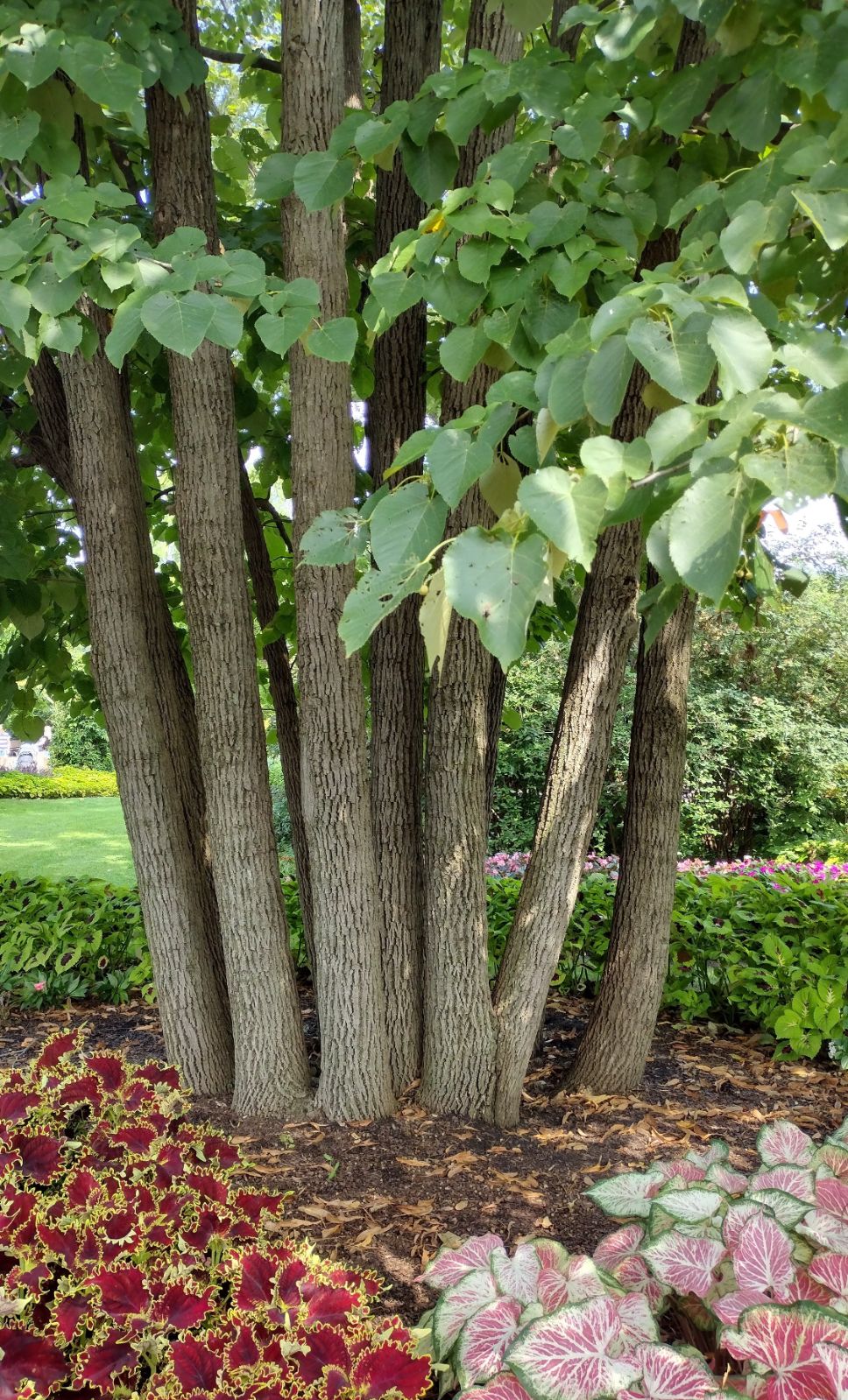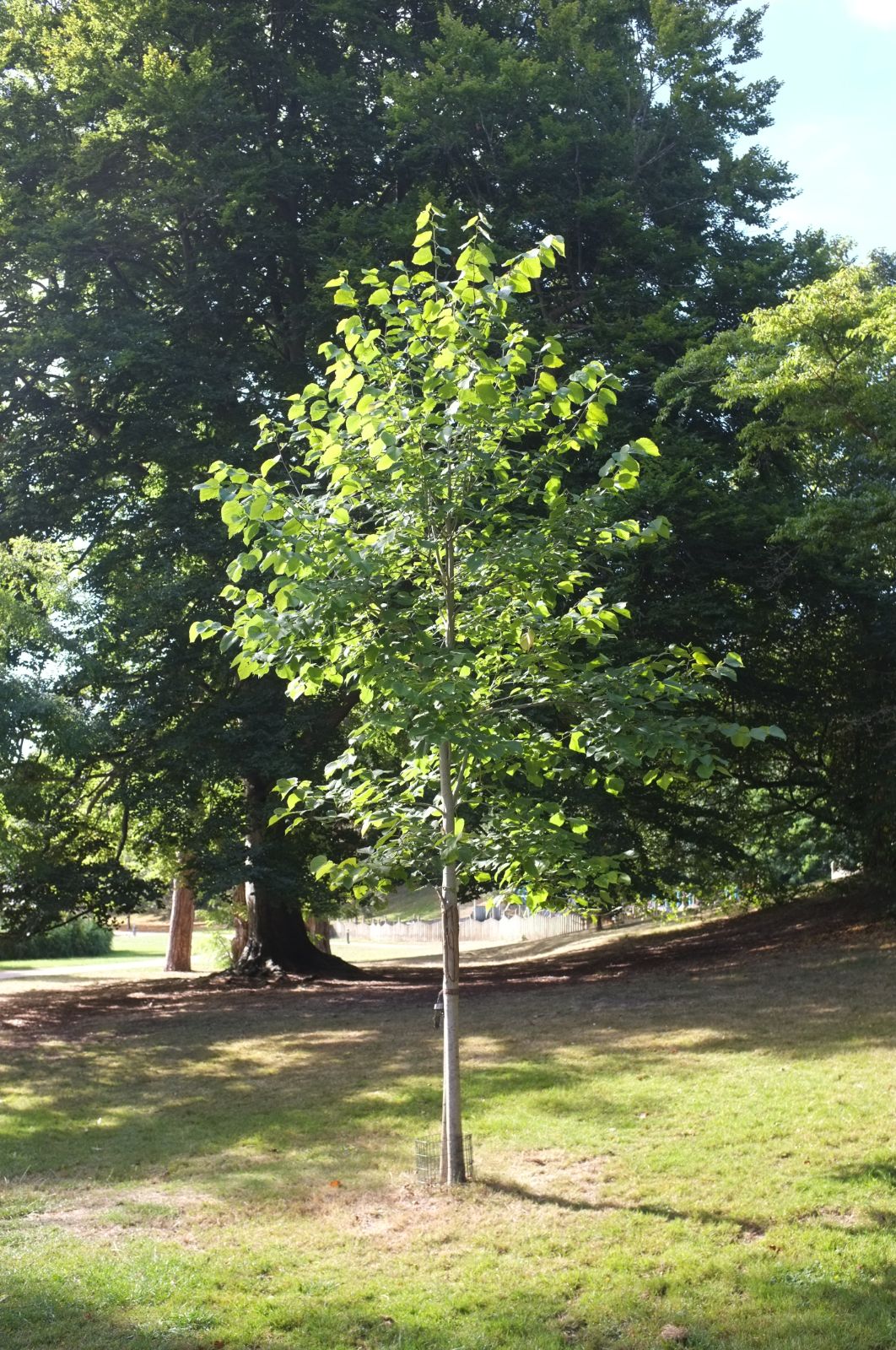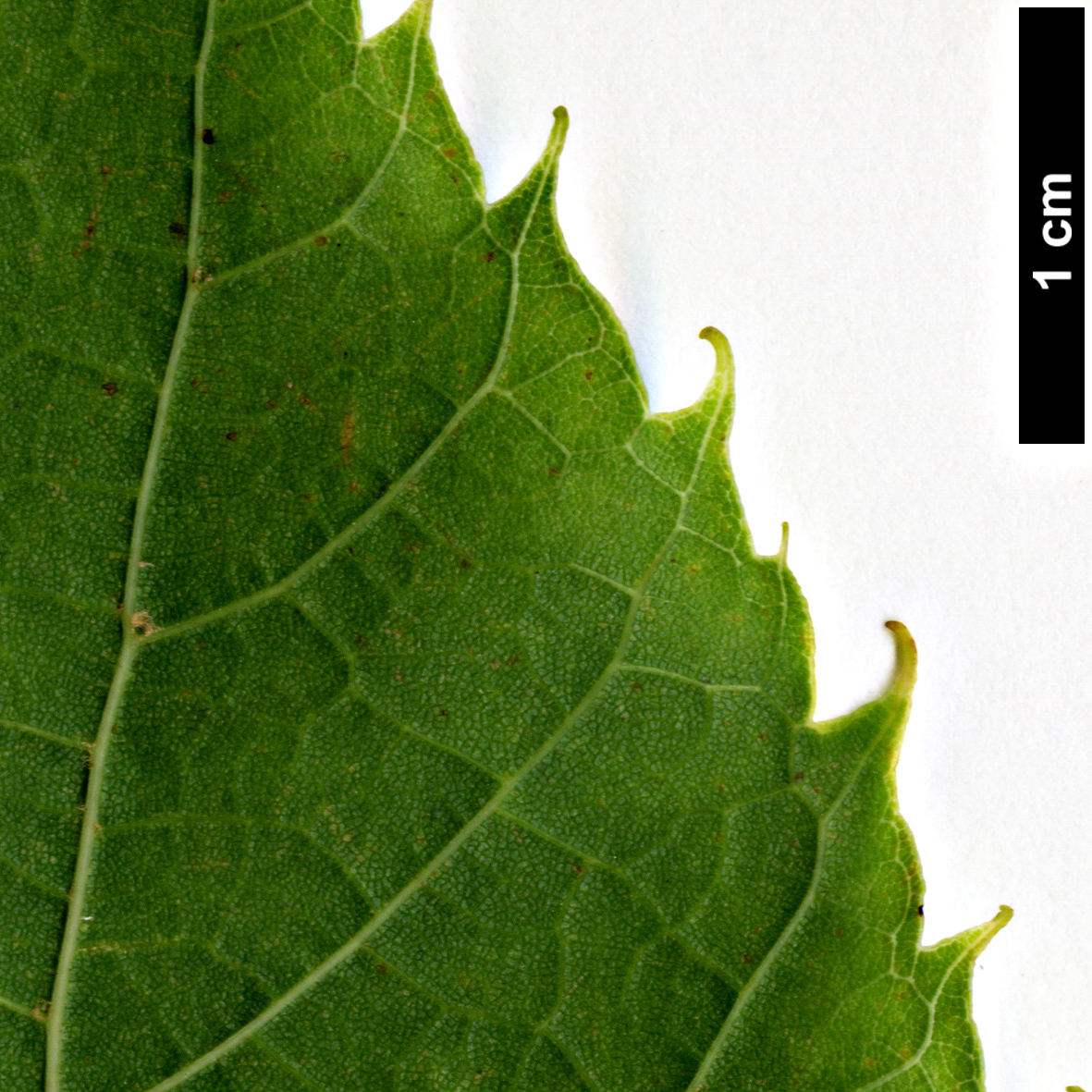Tilia americana
Sponsor
Kindly sponsored by
a member of the International Dendrology Society
Credits
Owen Johnson & Julian Sutton (2020)
Recommended citation
Johnson, O. & Sutton, J. (2020), 'Tilia americana' from the website Trees and Shrubs Online (treesandshrubsonline.
Genus
Common Names
- Basswood
- American Lime
- American LInden
Synonyms
- Tilia glabra Vent.
- Tilia canadensis Michx.
- Tilia nigra Borkh.
- Tilia caroliniana Mill.
- Tilia floridana Small
- Tilia heterophylla Vent.
- Tilia michauxii Nuttall ex Sargent
- Tilia monticola Sargent
- Tilia neglecta Spach
- Tilia × stellata Hartig
- Tilia mexicana Schlecht.
- Tilia venulosa Sarg.
Infraspecifics
Other taxa in genus
- Tilia amurensis
- Tilia callidonta
- Tilia chinensis
- Tilia chingiana
- Tilia concinna
- Tilia cordata
- Tilia dasystyla
- Tilia endochrysea
- Tilia × euchlora
- Tilia × europaea
- Tilia × flaccida
- Tilia × flavescens
- Tilia Hanwell Hybrids
- Tilia 'Harold Hillier'
- Tilia 'Harvest Gold'
- Tilia × haynaldiana
- Tilia henryana
- Tilia japonica
- Tilia × juranyana
- Tilia kiusiana
- Tilia mandshurica
- Tilia maximowicziana
- Tilia miqueliana
- Tilia mongolica
- Tilia nobilis
- Tilia × noziricola
- Tilia oliveri
- Tilia paucicostata
- Tilia platyphyllos
- Tilia tomentosa
- Tilia tuan
- Tilia 'Westonbirt Dainty'
Tree to 43 m. Bark brownish-grey, irregularly fissured after about 40 years. Shoots and buds sometimes glabrous, or with stellate pubescence which may be dense; buds with 2 or sometimes 3 scales exposed. Petioles 16–65 mm. Leaf blades 5–15(–20) × 5–12(–18) cm (figures in brackets for some exceptional trees in European cultivation), ovate to suborbicular, base cordate to truncate base, venation notably parallel towards the broadly triangular to acuminate apex, mid-green above and sea-green below with small compact tufts of hair under the major vein axils and sometimes with a variably dense cover of silvery, brown or reddish stellate hairs. Marginal teeth often relatively large and always regular, with conspicuous mucronate tips up to 2 mm long. Floral bracts 7–15 cm long, glabrous or with stellate pubescence, on stalks 4–18 mm long. Inflorescences hanging, branched 2–4 times, with 9–24 cup-shaped flowers. Staminodes present. Fruit ellipsoid to globose, 5–10 mm diameter. (Pigott 2012; Strother 2015).
Distribution Canada south, from southern Saskatchewan east to New Brunswick Mexico mountains apart from the central northern states United States eastern and central states, from South Dakota and Maine south to Texas and Florida
Habitat Forests, 10–800 m in USA, reaching 2600 m in Mexico
USDA Hardiness Zone 2-8
RHS Hardiness Rating H7
Conservation status Least concern (LC)
Taxonomic note The bewildering patterns of variation in North American Tilia have led to many taxa being described. At present, there is something close to a consensus in North America that this is best treated as a single, variable species (e.g. Strother 2015). Varieties are sometimes recognised: here we use the scheme laid out by Hardin (1990) and (almost) endorsed by Flora of North America (Strother 2015), but make no claim to its superiority over alternatives. This treatment recognises var. caroliniana, var. heterophylla, and var. mexicana. In marked contrast, Pigott (2012) recognises two species comprising several varieties, T. americana (northerly/northwesterly, with no or very few stellate hairs) and T. caroliniana (more southerly/southeasterly and in Mexico, with conspicuous stellate hairs). Some of Pigott’s varieties do not map onto those of Hardin/Strother in a simple way; their correspondence is shown in the table found at the foot of the main text.
A familiar and widespread tree in North America, Tilia americana was named as early as 1753 by Linnaeus in Species Plantarum. By this time it was in European cultivation (Pigott 2012), introduced from the Carolinas in 1726 by Mark Catesby, an Englishman whose private wealth allowed early investigations into the natural history of the American South.
This is a notoriously variable tree, which continues to vex taxonomists. The most apparent distinction is between those generally northern forms in which any hairs beneath the leaf are sufficiently sparse for them to appear green, and those where stellate pubescence creates a grey-green or whitish felt. A plethora of species and lower taxa has been named over the years (Pigott 2012). Many merge into one another, and taxa in alternative treatments do not always map onto one another in obvious ways. The modern trend has been to see this as a single, continuously varying species (Strother 2015), comparable to T. chinensis and T. tuan in China. We follow this approach, recognising four reasonably distinct varieties following Hardin (1990), in order to make some sense of the variation and of the names, which are still found attached various forms. It is not even clear to which section of the genus this species should belong, since it includes forms with and without stellate hairs. The last word on all this goes to American dendrologist Michael Dirr, who attempts to translate his students’ facial expressions as he tries to teach the distinction between T. americana and T. heterophylla: ‘who are you kidding, nobody can identify these things’ (Dirr 2009). An acceptance of uncertainty is advisable here.
The lightweight timber of T. americana does not lend itself to heavy construction, but it is much used in furniture and crates, and as pulpwood, being harvested particularly in the Great Lakes region (Missouri Botanical Garden 2020). It regenerates well from coppice stumps in the manner of the European limes (Crow 1990; LaFarge 1990). In addition to numerous medicinal uses of the tree, various Native American groups used the phloem fibres (bast, hence the vernacular name Basswood) for all manner of ropes, cords and fixings (Moerman 2020), a use continued by early settlers.
In European cultivation, Tilia americana is easily confused with T. × europaea and with the less pubescent forms of T. platyphyllos from central and southern Europe; the foliage of the Chinese T. nobilis is even more similar. The possibility should always be considered that some garden limes historically assumed to be European in origin may actually have belonged under T. americana: for example T. platyphyllos ‘Obliqua’ is described by Bean (1981) as a tree with leaves obliquely truncate at the base, larger than normal for T. platyphyllos, almost glabrous beneath, and with stalked floral bracts. (For a further discussion of this tree, see T. × flaccida). The clearest distinction is that Basswood flowers have staminodes, which are absent in all of the green-leaved European limes. In cultivated material, the Basswood leaf is usually larger than any of the European species’ and usually significantly longer than broad; the base is more likely to be cut across at an angle (obliquely truncate) rather than lobed on either side (cordate) and the slightly sunken main veins in the upper portion of the leaf are conspicuously parallel. Marginal teeth in the American species are more regular; the awn tipping each tooth is among the longest of the genus at 0.8–1.9 mm. The underleaf of the hairless forms is typically a darker sea-green than in the European limes, and the axillary hair tufts look somehow neater.
Early attempts at cultivation in Britain were challenging. The original Catesby introduction of southern provenance would not have proved very hardy, although more northerly material followed; the species gained a reputation for poor growth in cultivation (Bean 1981). This is fostered by examples such as one near the former flagstaff at Kew Gardens, an exceptionally large leaved form, but grafted at 0.4 m and having a gaunt habit; and an early, rather similar specimen in the Derby Arboretum which opened in 1840 (20 m × 79 cm dbh in 2015 – Tree Register 2018). There are however much better examples of this species in Britain and more widely in Europe. These probably belong primarily to var. americana and also to var. heterophylla (see below), but it is hard to be sure in these shifting taxonomic sands.
Basswood is quite widely cultivated as an ornamental and shade tree in North America. Many variants are seen in arboreta, as hardiness allows; specimens of all the botanical varieties recognised here are currently established at the Arnold Arboretum, Massachusetts (Arnold Arboretum 2020).
Cultivars have been selected, some in 19th century Europe but the majority later, in North America. All those mentioned here, with the exception of ‘Continental Appeal’ and perhaps ‘Moltkei’ are probably referable to var. americana, with green undersides to the leaves. The great majority have been selected for good crown form, often narrow: we list those most likely to be encountered, but others include ‘Capitol’, ‘Dakota’, ‘Douglas’ and ‘Rosehill’. ‘Duros’ stands out as being selected for hardiness. The literature mentions a few obscure mutant leaf forms; ‘Convexifolia’ is weak-growing tree, its leaves concave like spoons (Krüssmann 1984). One yellow-variegated form, ‘Aureo-Variegata’ (Santamour & McArdle 1985) has sunk without trace in the usual way of variegated limes.
Several hybrid cultivars, some of them extremely hardy, are listed under T. × flavescens and T. × flaccida.
| Pigott’s taxa | varieties of T. americana as used here |
| T. americana L. | var. americana |
| T. caroliniana Miller | |
| subsp. caroliniana | var. caroliniana in part |
| subsp. floridana (Small) A. E. Murray | var. caroliniana in part, var. mexicana in part |
| subsp. heterophylla (Venténat) Pigott | approximates to var. heterophylla |
| subsp. occidentalis (Rose) Pigott | var. mexicana in part |
'Bailyard'
Synonyms / alternative names
Frontyard®
Broadly pyramidal, symmetrical, dense crown. Introduced 1994 by Bailey Nurseries, Minnesota (Jacobson 1996; Dirr 2009). Widespread in the North American trade.
'Boulevard'
Narrow crown, hardy to Zone 3; selected by 1999, introduced by Bailey Nursery, Minnesota (Dirr 2009; Jablonski & Plietzsch 2013). Widespread in the North American trade.
'Continental Appeal'
Synonyms / alternative names
'Prestige'
Continental AppealTM
A relatively narrow, dense-crowned selection of var. heterophylla, with white-hairy undersides to the leaves. Selected by Willet Wandell, Illinois, and granted US Plant Patent 3770 in 1975 (Jacobson 1996; Dirr 2009). The patent application stated that the leaves are less prone to discolour in late summer, in the continental climate of Illinois – hence perhaps the cultivar name. ‘An excellent plant where lateral space to spread is limited’ (Dirr 2009). It is probably the most widely planted clone of var. heterophylla in North America, also available in Europe.
'Duros'
Synonyms / alternative names
True North
An especially hardy (to Zone 2), narrow crowned selection by Rick Durand at Jeffries Nurseries, Manitoba (Jeffries Nurseries 2019). Widely marketed in Canada and the central United States.
'Fastigiata'
Synonyms / alternative names
Tilia americana 'Pyramidalis'
A narrow-crowned clone, not truly fastigiate, selected by B.H. Slavin in the Rochester Parks, New York, about 1927 (Bean 1981; Santamour & McArdle 1985). ‘Not a bad looking tree’ (Dirr 2009), it is offered commercially in both North America and Europe. An example in the Sir Harold Hillier Gardens, Hampshire was 14 m × 0.39 m dbh in 2011 – Tree Register 2018.
'Lincoln'
Narrow crown with upright branches; selected 1970 by the Klehm Nursery, Illinois and introduced 1985 (Jacobson 1996; Dirr 2009). Still in the North American trade.
'Macrophylla'
This name, for a very large leaved variant, dates from 1862 in Germany, and was in North American commerce by 1892 (Jacobson 1996). ‘Leaves huge, commonly 12”–15” [30–38 cm]’ (Jacobson 1996). If this proved accurate and regularly achievable, it could be an impressive plant. The name, at least, persists in eastern European commerce.
'McKSentry'
Synonyms / alternative names
American Sentry®
'Sentry'
Upright and symmetrical, with a narrow crown in youth; bark of young branches distinctively grey; some resistance to Japanese Beetle reported. Selected by Howard Kulke at McKay Nursery, Wisconsin by 1991 (Jacobson 1996; Dirr 2009; McKay Nursery 2020). An important clone in the North American and European trade.
'Moltkei'
Synonyms / alternative names
Tilia × moltkei Spaeth ex C.K. Schneid.
Tilia 'Moltkei'
Vigorous, with large leaves lightly grey-felted beneath; broad crown, with slightly drooping branches. Originating in Germany around 1875, it was distributed by the Späth nursery in 1883 and named for the Prussian Field Marshal Helmuth von Moltke, who planted one outside Späth’s house in 1888, next to a Silver Lime planted by Bismarck (Bean 1981; Jacobson 1996; van den Berk Nurseries 2020). Originally suspected to be a hybrid between T. americana and T. tomentosa, the modern consensus is that is pure T. americana, perhaps a hybrid between var. americana and var. heterophylla (Pigott 2012). The UK Champion, near Welshpool, Powys, was 24 m × 1.03 m dbh in 2009 (Tree Register 2018). There are several specimens at the Morton Arboretum, Illinois, including one planted in 1929 (16 m in 1986 – Jacobson 1996; Morton Arboretum 2020). It is propagated commercially in Europe.
‘Zamoyskiana’, from the Kornik Arboretum, Poland, is similar but slightly more weeping, and has made a handsome tree in the lime collection at the Morton Arboretum, Illinois (Morton Arboretum 2018). ‘Spectabilis’ also resembles ‘Moltkei’, but has some stellate pubescence on the branchlets and buds, and was distributed by Georg Dieck from the Zöschen Arboretum, Germany in the late 19th century (Bean 1981): a specimen from 1888 in the lime collection at Glasnevin National Botanic Garden, Dublin was 28 m × 0.78 m dbh in 2012 (Tree Register 2018).
'Nova'
Fast growing, with a broadly ovoid crown and perhaps reaching 25 m; leaves dark and large, to 20 cm (Jablonski & Plietzsch 2014; van den Berk Nurseries 2020). Probably originating in Germany or the Netherlands in the 1950s (Jablonski & Plietzsch 2014), it is widespread in the European trade, marketed for urban plantings. Heinze (2004) showed that trees with hybrid features such as rudimentary staminodes were widespread as younger plantings in Germany; at least some of these had been supplied as ‘Nova’. This might imply that ‘Nova’ belongs in T. × flaccida (q.v.), but does not preclude the possibility that those examples were wrongly named. We have not examined stocks of ‘Nova’ for this account, and reserve judgement.
The old German ‘Dentata’, with deeply toothed leaves, is similar (Bean 1981; Jablonski & Plietzsch 2014). A tree with unusually broad, orbicular leaves labelled ‘Dentata’ at Oare House, Wiltshire, was 24.5 × 0.51 m dbh in 2016, when nearing the end of its life (Tree Register 2018).
'Pendula'
The name Tilia americana ‘Pendula’ featured in 19th century nursery catalogues, but the example sold – probably by Booth of Hamburg – to the Muskau Arboretum in the 1830s was the clone of T. tomentosa now known as ‘Petiolaris’ (Bean 1981), and was adopted by Kirchner as the type of this cultivar. This led to an incorrect assumption that T. americana ‘Pendula’ was simply a nursery name for the very different ‘Petiolaris’.
A tree in Alexandra Park, Hastings, East Sussex, 15 m × 1.04 m dbh in 2016 and known to Owen Johnson since childhood, was first identified as Tilia americana by Alan Mitchell in 1983 (Tree Register 2018). It is grafted at head height and has gracefully drooping branches. The stock is Broad-leaved Lime and seems to be the less-pubescent subsp. platyphyllos, suggesting that the tree may have been sourced from a nursery somewhere in central Europe. Its leaves are smaller than most Basswoods’ and place it within T. americana var. americana; it is the survivor of two examples within a collection of limes dating probably from the 1890s. Ten other examples of this clone, of approximately the same age have been found: at East Park, West Park and Thwaite Hall (all in Kingston upon Hull); in the Glasgow Botanic Gardens; in Roundwood Park, Willesden, London; in the Park Road Gardens, Grange-over-Sands, Cumbria; and in a front garden in the Norfolk Park area of Sheffield.
Since a tree called Tilia americana ‘Pendula’ was known to be distributed in Europe in the 19th century, and as these Basswoods seem to have been sold for their weeping habit, it is reasonable to assume that they belong to this long-forgotten but distinctive clone. There is no evidence for the cultivar’s survival in continental Europe or North America.
Another lime with a slightly weeping habit and with leaves of very similar size and shape, but with slightly larger axillary tufts, is grown at Kew as Tilia platyphyllos ‘Obliqua’ and at the Royal Botanic Garden Edinburgh as T. × europaea ‘Pendula’; see the entry for T. × flaccida for a discussion of this plant.
'Redmond'
Synonyms / alternative names
Tilia × euchlora 'Redmond'
A handsome selection with unusually glossy leaves and a good, straight trunk. Distributed from 1927 by Plumfield Nurseries, NE, from a Basswood growing locally (Jacobson 1996; Dirr 2009). In the United States it has been ‘common nationally since the 1950s’ (Jacobson 1996). In the United Kingdom it grows beautifully but does not always remain healthy (O. Johnson, pers. obs.). It had reached 18 m × 0.5 m dbh at the Sir Harold Hillier Gardens, Hampshire by 2012 (Tree Register 2018). It is still available commercially on both sides of the Atlantic.
var. americana
Lower leaf surfaces on flowering shoots initially with only microscopic hairs except for tufts of simple, forked, and/or fascicled hairs at some vein axils (Strother 2015).
This is the variant with green undersurfaces to the the leaves. The most northerly forms belong here, although there is overlap in range with var. heterophylla in particular.
Most of the best British specimens belong here. The largest are among ten trees at Skibo Castle, Easter Ross at nearly 58°N (to 24 m, dbh 101 cm in 2013 – Tree Register 2018). This should refute any idea that this is a species only for warm gardens. It is tempting to speculate that these Scottish trees may have originated in the Pittsburgh area where Skibo’s owner, industrialist Andrew Carnegie made his wealth. Other examples of similar, thriving trees include the Welsh champion at Dol Idris, below Cader Idris in Snowdonia (23 m, dbh 86 cm in 2016) and a large planting around Lion Green in Haslemere, Surrey (to 23 m, dbh 86 cm in 2015). An avenue of Basswoods probably planted in the 1950s across Calderstones Park, Liverpool is extraordinarily even, with individual trees to 19 m × 64 cm by 2015 (Tree Register 2018).
A smaller-leaved, graceful tree at Lyme Park in Cheshire (22 m, dbh 78 cm in 2015), planted in the early 20th century by the renowned horticulturalist Vicary Gibbs, has grown well in a relatively cool microclimate. Another in the park at Nymans, West Sussex was 25 m, dbh 67 cm in 2016 (Tree Register 2018). These belong to a variant with very sparse four-armed stellate hairs under the leaf, too few to prevent it appearing green (Tilia americana var. neglecta in Pigott’s alternative classification).
The Basswood can grow rather larger in a more continental climate. European champions include trees in the Hohenheimer Garden, Stuttgart, Germany (31 m, dbh 1.16 m in 2013); in Zehlendorf, Berlin (25 m, dbh 1.34 m in 2016); and in the Parco Reale, Monza, Italy (28 m, dbh 1.35 m in 2017 – monumentaltrees.com 2018). These are all assumed to belong to var. americana.
var. caroliniana (Mill.) A.E. Murray
Synonyms
Tilia caroliniana subsp. caroliniana
Tilia caroliniana subsp. floridana (Small) E. Murray
Lower leaf surfaces on flowering shoots initially sparsely to moderately stellate-hairy and with simple, forked, and/or fascicled hairs scattered and/or in tufts at some vein axils; attachments of the stellate hairs are usually fragile and the stellate hairs become sparser as the season progresses (Strother 2015).
This name covers forms from the southeastern part of the species’ range with a conspicuously tomentose underside to the leaf. This variety – the first to reach Europe – used to be considered a failure in Britain (Bean 1981) and has certainly made little impact on cultivated stocks in Europe. A tree from the small coastal population in the Carolinas, planted in 1984 in the Sir Harold Hillier Gardens, was 10 m × 0.26 m dbh in 2017 (Tree Register 2018). Donald Pigott reports that growth continues into winter and the tree consequently suffers frost damage in his own Cumbrian garden (Pigott 2012). A specimen labelled T. caroliniana in the National Lime Collection at Peasmarsh Place, supplied by Hillier and Sons, appears to be T. platyphyllos (O. Johnson pers. obs.).
Seed from a still more southerly population (belonging to Tilia caroliniana subsp. floridana in Pigott’s alternative classification) was collected in the Florida Panhandle by Pigott in 2000 (Pigott 2012), but no seedling is known to have grown at all well. A specimen growing under this name in the National Botanic Garden of Belgium at Meise was obtained from Pavia Boomkwekerij, Deerlijk, Belgium, where material had in turn been received from the Arnold Arboretum (De Meyere 2006). Although the Arnold Arboretum in Massachusetts is far to the north of the natural range of this population, in Massachusetts, two specimens of Arkansas provenance have grown there for about 60 years, both 29 cm dbh in 2019 (Arnold Arboretum 2020, Grimshaw & Bayton 2009).
var. heterophylla (Vent.) Loudon
Synonyms
Tilia heterophylla Vent.
Tilia caroliniana subsp. heterophylla (Vent.) Pigott
Lower leaf surfaces on flowering shoots initially moderately to densely stellate-hairy and with simple, forked, and/or fascicled hairs scattered and/or in tufts at some vein axils; attachments of the stellate hairs usually firm and the stellate hairs usually persist (Strother 2015).
This taxon represents trees primarily from the Appalachians, with conspicuous grey or white pubescence beneath the leaves.
In the lime collection at the Royal Botanic Garden, Kew, two trees labelled Tilia heterophylla with beautifully grey-felted underleaves have thrived (22 m, dbh 1.1 m and 24 m, dbh 0.91 m in 2010); a third specimen there flushes very early in the spring. Other examples of this form in Britain have struggled; one planted in 1930 in the cooler climate of Hergest Croft, Herefordshire was 11 m, dbh 0.58 m in 2013 but had retrenched badly, and there is another stunted old tree at Albury Park in Surrey (Tree Register 2018). Donald Pigott has observed that a tree of this group collected by himself in the Blue Ridge Mountains, Virginia in 1995 is prone to dieback during minor droughts in his coastal Cumbrian garden (Pigott 2012).
A superb clone of Basswood with densely felted underleaves was distributed by Hillier and Sons around the third quarter of the 20th century under the name Tilia monticola. This forms an impeccable narrow parabolic shape and its large, rather rectangular leaves are very dark green above and exquisitely dove-grey beneath, making it one of the most desirable of limes. Planted by the late Maurice Mason this had reached 15 m, dbh 0.40 m at Talbot Manor in Norfolk in 2008 (Tree Register 2018). ‘Continental Appeal’ (q.v.) is of comparable quality, and widepread in the trade.
var. mexicana (Schlecht.) Hardin
Synonyms
Tilia mexicana Schlecht.
Distinguished from var. caroliniana by its disjunct distribution (200 km separating populations of var. caroliniana in Texas and var. mexicana in Coahuila) – somewhat supported by the villose pubescence of its twigs, peduncles and pedicels, but the hair type is very variable in the Mexican populations. Leaves unequal at base, with reddish-brown hairs. Cymes large, usually exceeding the length of the accompanying bracts; dense covering of stellate hairs on outsides of sepals. (Hardin 1990; Grimshaw & Bayton 2009)
Distribution
- Mexico
USDA Hardiness Zone: 8
Limes are widespread in moist forests in the mountains of Mexico. All Mexican Tilia are placed here, although this treatment is not universally accepted. In Pigott’s alternative classification, most belong to T. caroliniana subsp. occidentalis (Rose) Pigott, while T. caroliniana subsp. floridana extends into northeast Mexico (Pigott 2012).
From the limited sample available in cultivation, plants seem to be surprisingly hardy. Seed was collected by the British team of James Compton, John d’Arcy and Martyn Rix in the Sierra Madre Oriental near Saltillo, Nuevo León in 1991. This has given rise to several specimens in British gardens that are growing steadily, including on heavy clay in James Compton’s Wiltshire garden (J. Compton, pers. comm. to J. Grimshaw 2008), and it has been offered commercially in the United Kingdom from the same provenance. It has also been collected in three localities by Donald and Sheila Pigott. The elongated leaves with their reddish hairs are very attractive (Grimshaw & Bayton 2009).
Not widely cultivated in North America, there is a specimen of Nuevo León provenance at the Arnold Arboretum (Arnold Arboretum 2020).
'Wandell'
Synonyms / alternative names
LegendTM
'DTR 123'
Relatively narrow crown, with good branching structure; thick leaves less prone to discolouration in late summer. Selected before 1988 by Willet Wandell, Illinois. At 55 years old the parent tree measured 17 m tall, with a spread of 11m (Dirr 2009). It is in the North American trade.


